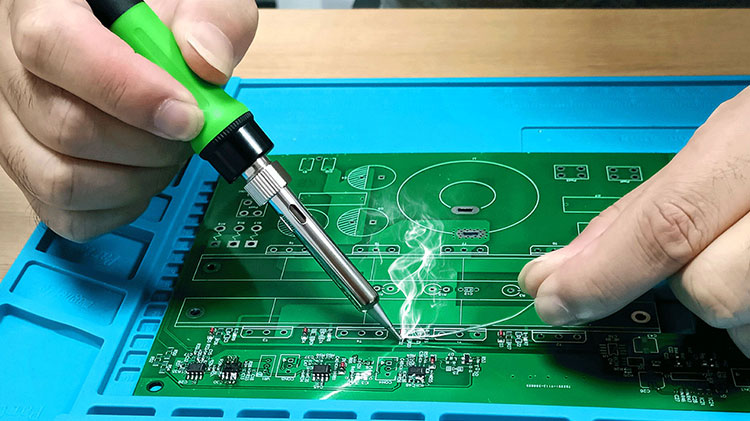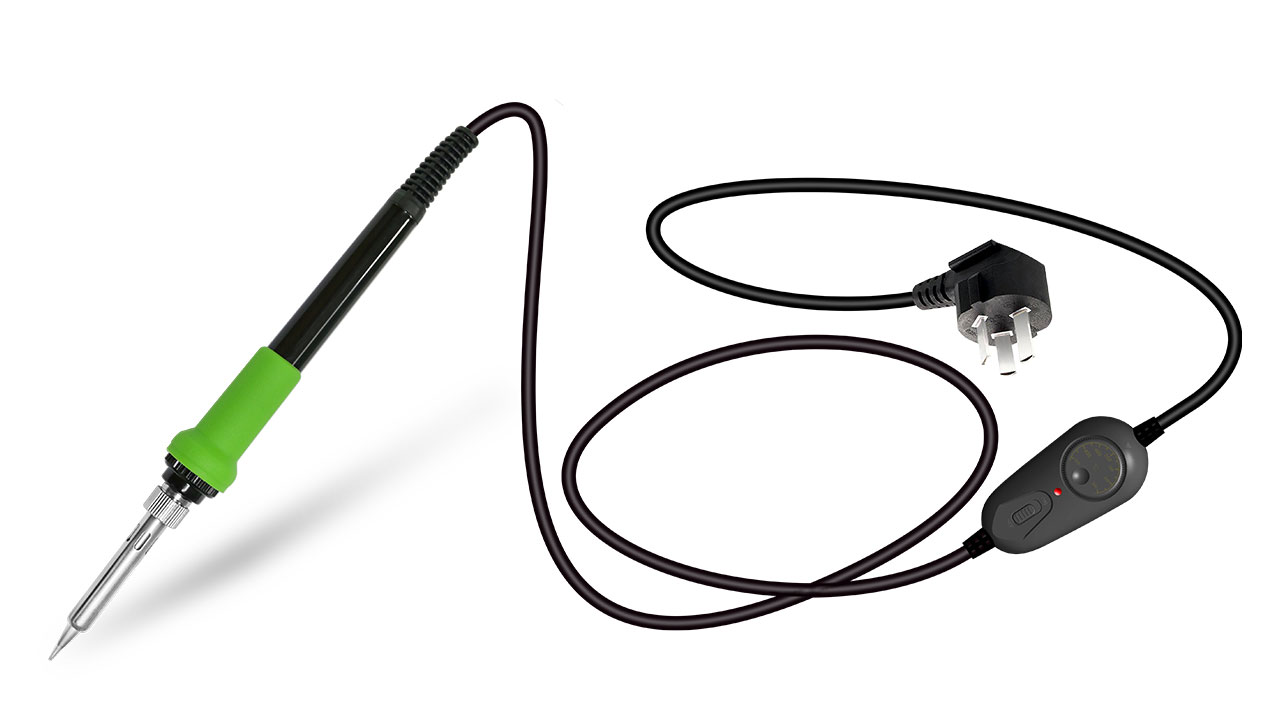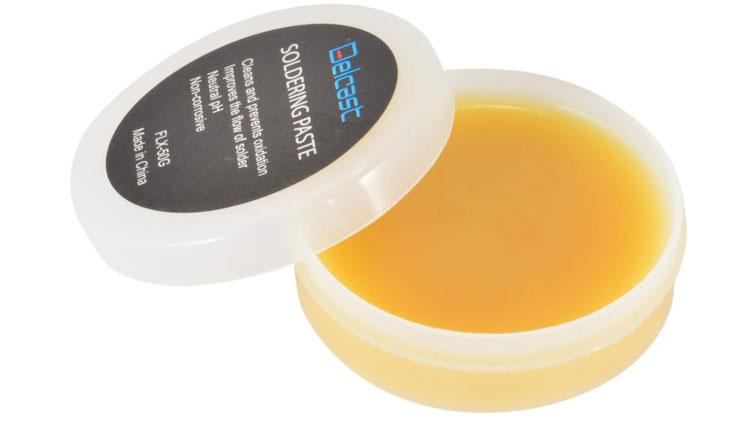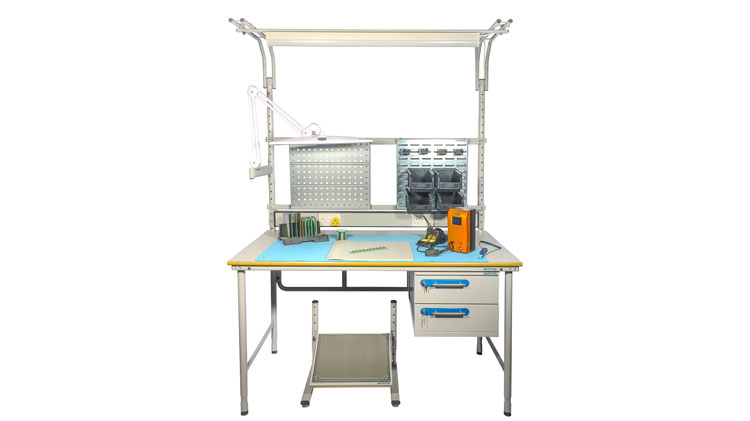Soldering is a technique used to join two or more metal items using a filler metal, known as solder, with a lower melting point than the metals being joined. This technique is commonly used in electronics and electrical work, as well as in jewelry making and other crafts. In this essay, we will discuss the steps involved in beginning to solder, including the tools and materials you will need, how to prepare your work area, and how to use the soldering iron properly.

First, talk about the tools and materials you need to begin soldering. An essential tool is a soldering iron itself. Soldering irons come in various sizes and shapes, and the type you choose will depend on the project you are working on. For most basic soldering tasks, a small, pencil-shaped soldering iron with a conical tip will suffice. You will also need some solder, which is typically made of a mixture of tin and lead. The amount of solder you need will depend on the size of your project, but a small spool of solder will usually be enough for most basic tasks.

In addition to the soldering iron and solder, you will also need some flux, a cleaning agent that helps the solder flow and bond properly. Flux is available in both liquid and paste form, and the type you choose will depend on your personal preference. Other tools you may need include a damp sponge or cloth for cleaning the soldering iron tip, pliers or tweezers for holding small parts in place, and a soldering iron stand to keep the iron upright and safe when not in use.

Once you have gathered all of your tools and materials, the next step is to prepare your work area. Soldering can be a messy and dangerous process, so it's important to have a clean, well-lit workspace with plenty of ventilation. Before you begin, make sure you have removed any flammable materials from the area, and consider setting up a small fan to help circulate the air and dissipate any harmful fumes. It's also a good idea to cover your work surface with a heat-resistant pad or mat to protect it from the heat of the soldering iron.

Before you start soldering, you will need to prepare the pieces you will be joining. This usually involves cleaning the surfaces of the metal to remove any dirt, grease, or oxide that may be present. You can do this using a brass brush or fine sandpaper or by using a commercial metal cleaning solution. Once the surfaces are clean, you can apply the flux to the surfaces using a small brush or a cotton swab. This will help the solder to flow and bond properly, and it will also prevent the oxidation of the metal.
Once your work area is prepared, and your pieces are ready, it's time to start soldering. Begin by heating up the soldering iron, which typically takes about five minutes. When the iron is hot, touch the tip of the iron to the surface of the solder to check if it is hot enough. If the solder melts easily, the iron is ready to use. If not, allow the iron to heat up for a few more minutes before trying again.
Next, hold the soldering iron in your dominant hand and use your other hand to hold the pieces you will be joining together. Touch the tip of the soldering iron to the joint where the two pieces will be joined, and apply a small amount of pressure to hold the pieces in place. Then, touch the end of the solder to the joint, and allow it to flow into the seam between the two pieces. The solder will melt and flow along the seam, bonding the pieces together.
Once the solder has flowed and bonded the two pieces together, remove the soldering iron and allow the joint to cool for a few seconds. Then, use the damp sponge or cloth to clean the tip of the soldering iron, removing any excess solder or debris that may have accumulated. This will help to keep the iron in good working condition and prevent it from clogging or overheating.
After the joint has cooled and the soldering iron has been cleaned, you can inspect the joint to make sure it is strong and secure. If the joint is not solid, you can apply more solder to the area and repeat the process. You can also use pliers or tweezers to adjust the position of the pieces if needed, making sure they are aligned properly before applying the solder.
Once the joint is strong and secure, you can move on to the next step in your project, or you can repeat the soldering process to join additional pieces together. When you are finished soldering, it's important to properly care for your tools and clean up your work area. This includes turning off and unplugging the soldering iron and allowing it to cool completely before storing it. It would help if you also cleaned up any excess flux or solder that may be present on your work surface and disposed of it properly.
In conclusion, soldering is a useful technique that allows you to join two or more metal pieces together using a lower-melting-point filler metal. To begin soldering, you will need a soldering iron, solder, and flux, as well as some other tools and materials. You will also need to prepare your work area and clean the surfaces of the metal pieces you will be joining. Once everything is ready, you can heat up the soldering iron, apply the flux, and use the soldering iron to melt and flow the solder into the seam between the pieces, bonding them together. With practice, you can master the art of soldering and use it to create a wide range of projects and applications.
Contact: Mr. Li
Phone: (0086) 138 24254 321
E-mail: atetool@atetool.com.cn
Add: 5F, 1-2# Building, Tongfuyu Industrial Zone, Aiqun Rd, Shiyan Subdistrict, Bao'an, Shenzhen, 518108, China